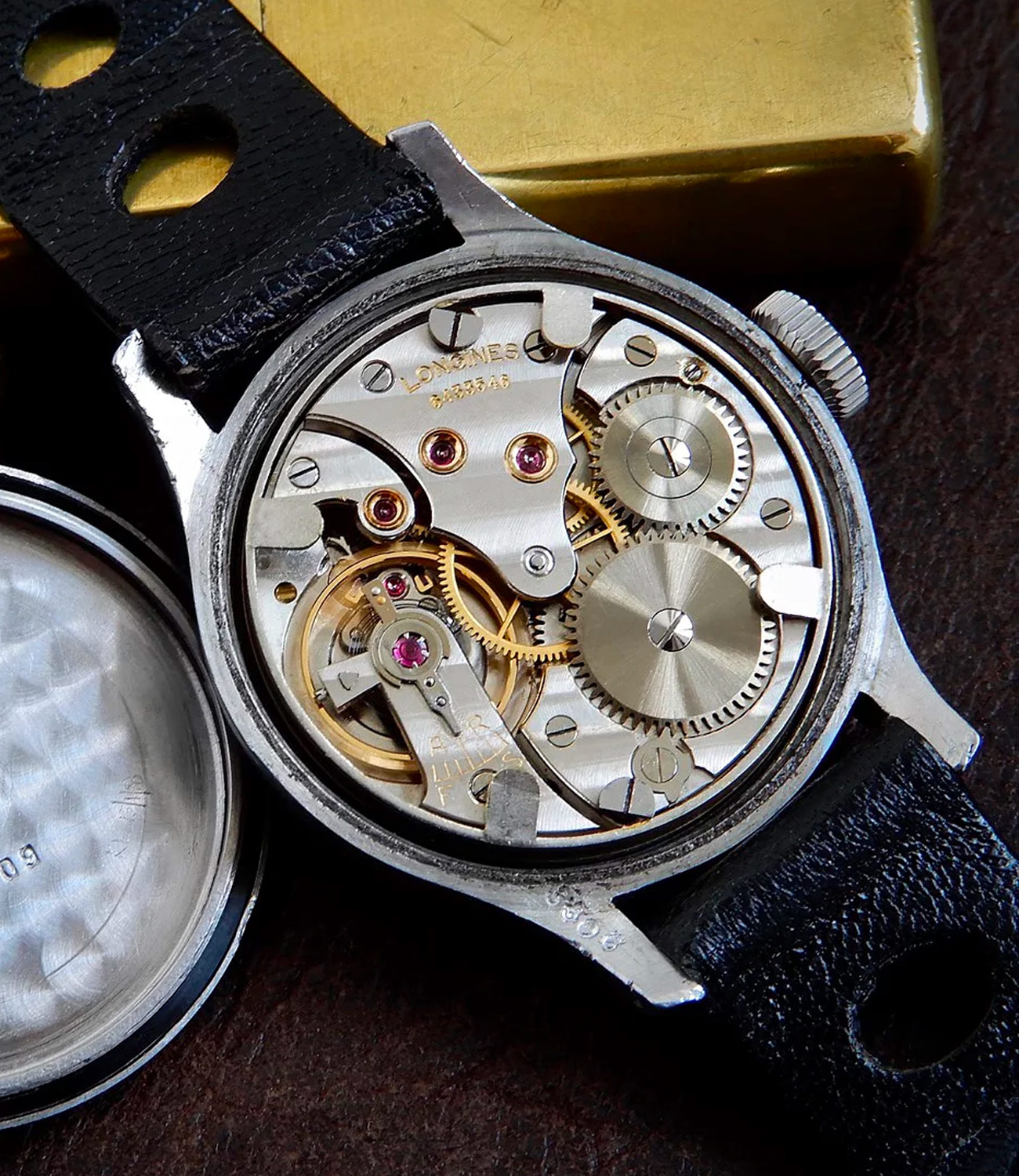If you were a looking for a robust, reliable wristwatch in the 1940s, chances are a Longines would be in the running. While contemporary titans like Omega and Rolex were well established at this time, Longines had developed a reputation for being a superlative and trustworthy brand, and for a handful of good reasons.
To begin with, it was a Longines that Lindberg wore during his historic 1927 flight; the unique watch was designed by the pilot, but by association with his feat Longines had won the air. To be fair, Longines had been named the official supplier for the International Aeronautical Federation (IAF) in 1919, likely in part for its development of the very first wristwatch chronograph movements, the 13.33Z. Prior to the 13.33Z, aviators and mariners — who relied at that time on chronographs for navigation — were confined to pocket watches, and while they were functional and fairly available by the early 1900s, wrist-borne chronographs freed the hands of the user for other tasks, like piloting the vessel.

Photo: all-vintage-watches (eBay)
The notoriety that Longines had garnered by mastering the skies was backed up by incredibly robust movements which had been fitted with shock protection. But for all their accomplishments, Longines watches from the 1920s and early 1930s were fitted with gasketless snap-back cases that lacked adequate protection from moisture and dust. By the 1940s, Longines was using screw back cases for their chronographs, a then-new approach that has since become the norm. These case backs were milled with either three or six notches designed to aid in tightening the threaded case backs to the case. Decades later, Italian collectors would use the terms “tre tacche” and “sei tacche” (three-notch and six-notch, respectively) to reference these watches.
While Longines’s chronograph production in the 1940s was robust, the production of simpler three-hand watches was prolific. Using the technology it had honed in the development of its chronographs, Longines was able to produce reliable time-only watches that were shock-, dust- and water-resistant. These watches were characterized by small steel cases (30-32mm) with tapered lugs and simple stepped bezels. While some of these time-only watches were produced under contract for various militaries, many more were produced for the consumer market. Most utilized the venerable Longines calibre 12.68z, a robust, manual-wind movement with anti-shock protection, though some also utilized the 27M with its sub-seconds layout.

Photo: FullyWound
Because these time-only watches were produced in great numbers from the late 1930s and throughout the 1950s, it’s common to see a variety of dial and hand configurations. The most sought-after of these are the sector dials variants and those produced for military use (including some very early variants produced for German military use during WWII). The most common expression was that of a white or silver dial, Arabic numerals, and sword or syringe hands. However, due to their tough-as-nails nature, many, if not most, of these watches were heavily used, and because collectibility sentiments were not once what they are now, many of these watches were restored or refinished, leading to a wide array of condition and originality today.
Interestingly, neither the chronographs nor the three-hand watches of this era were given model names by Longines. Many collectors will refer to the chronographs by their caliber, but the terms tre and sei tacche could technically apply to both chronograph and non-chronograph watches. However, due to their complexity, far fewer chronographs were produced, and fewer still are still functioning, meaning that the majority of Longines watches referred to as “tre tacche” and “sei tacche” are the three-hand, time-only watches.
Modern palettes might find the small case of the tre and sei tacche unappealing, but consider this: The first Patek Philippe Reference 96 was only 31mm, and subsequent models are only a few millimeters larger. The love for Patek’s time-only dress watch definitely spills over into other simple three-handers from the era, making the Longines tre and sei tacche an excellent choice at an incredible value.

